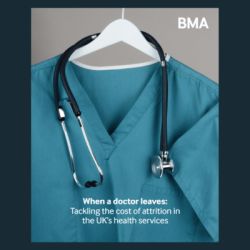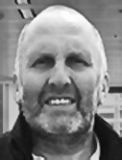
We interview Mark to draw out his knowledge, insight and predictions on the medical equipment industry at large, with a focus on sectioning.
Mark Fenn, Director at Bright Instruments, has 38 years’ experience as an expert in the mechanical engineering field. His extensive time in the industry has seen him fulfil many exciting roles, including within General Motors and Bombardier, which have been pivotal to his experience in product development. Mark joined Bright Instruments over 3 years ago and with him, he brought a great wealth of knowledge and expertise.
We take this time to ask Mark about his life spent in the industry, hopefully to gain some crucial insight, and to make key predictions surrounding the medical equipment industry at large, with a focus on sectioning.
Q) Mark, you’ve been working in engineering for a number years now, what do you see as the key recurring challenge related to product development and usability that you seem to experience time and time again?
A) In all my years in the industry, the challenges have surprisingly remained the same, contrary to wider society which has largely been impacted by the shifts in the digital landscape. The core challenges with the industry as a whole centralise around ease of use, ergonomics – particularly from a viewpoint of users performing repetitive tasks, weight reduction - for more portable machinery, costings - particularly with the rising level of imports, and for sectioning, it is about maintaining the integrity of the cut.
Q) How have things evolved in the industry over the past ten years?
A) I would suggest that the market is now very much price-driven, and competition is fierce as there is a real surge of cheaper imports creating challenges for domestic manufacture. There seems to have been a real shift in the past few years in terms of requirements, with a strong surge in demand for more bespoke units like the Starlet Portable Cryostat. This is arguably due to developments in technology alongside the more obvious spatial constraints attached to the increasingly-witnessed rental of smaller laboratory environments.
A further development is centralised around the progression of electrical technology and the broader digital landscape. A personal concern surrounding this is the issue of security surrounding the integration of digital, especially regarding the use of equipment and the transfer of data. Unquestionably, this a consideration and a focal point for the industry now.
Q) Based on your extensive research, what are the largest obstacles/issues reported by those who are typically using sectioning equipment?
A) This is a fairly straightforward one to answer. I would suggest that the key obstacles surrounding sectioning equipment tend to encompass training and ease of use. It’s imperative that the end-users feel completely confident in the setup, calibration and operation of this cutting-edge equipment, to ensure a wholly consistent cut is achieved.
Furthermore, an additional obstacle sits around the ergonomic design, as sectioning is often a repetitive task and therefore Bright Instruments’ continuous improvement programme is designed to collate data from those in the field, which in turn feeds back into product development.
Q) What do you particularly enjoy about working in this industry?
A) There is honestly too much to list, but I’m going to focus on some key highlights.
First and foremost, I go to work each day with the genuine belief our machines are making a difference in the accurate testing of tissues in the laboratories in which they’re used, and therefore progressing the diagnosing and future treatment of diseases which to me is very, very powerful.
Secondly, I feel that the machines go a long way in universities and other research institutions to facilitate some real quality research, which eventually leads in many cases to improvements in technologies and quality of life, which ultimately benefits us all.
Another huge aspect for me, is working with Bright Instruments and ensuring the quality of our cuts mirrors the brand image and reputation it has cemented in the industry. When I came on board I made a point to meet professionals in the field who were familiar with our instruments to receive feedback, and the praise I received made me feel very proud. I realised then that the company was very special.
Q) What are your predictions for the future of sectioning?
A) I have many key predictions however I would like to hold some cards close to my chest as the overseer of Bright’s continuous development programme. But I will say this, I can see the further integration of imaging technology forming a crucial part in the process of sectioning in the future. It may be a little way off but we’re already witnessing elements of this in the likes of cryo-electron microscopy.
We take this time to ask Mark about his life spent in the industry, hopefully to gain some crucial insight, and to make key predictions surrounding the medical equipment industry at large, with a focus on sectioning.
Q) Mark, you’ve been working in engineering for a number years now, what do you see as the key recurring challenge related to product development and usability that you seem to experience time and time again?
A) In all my years in the industry, the challenges have surprisingly remained the same, contrary to wider society which has largely been impacted by the shifts in the digital landscape. The core challenges with the industry as a whole centralise around ease of use, ergonomics – particularly from a viewpoint of users performing repetitive tasks, weight reduction - for more portable machinery, costings - particularly with the rising level of imports, and for sectioning, it is about maintaining the integrity of the cut.
Q) How have things evolved in the industry over the past ten years?
A) I would suggest that the market is now very much price-driven, and competition is fierce as there is a real surge of cheaper imports creating challenges for domestic manufacture. There seems to have been a real shift in the past few years in terms of requirements, with a strong surge in demand for more bespoke units like the Starlet Portable Cryostat. This is arguably due to developments in technology alongside the more obvious spatial constraints attached to the increasingly-witnessed rental of smaller laboratory environments.
A further development is centralised around the progression of electrical technology and the broader digital landscape. A personal concern surrounding this is the issue of security surrounding the integration of digital, especially regarding the use of equipment and the transfer of data. Unquestionably, this a consideration and a focal point for the industry now.
Q) Based on your extensive research, what are the largest obstacles/issues reported by those who are typically using sectioning equipment?
A) This is a fairly straightforward one to answer. I would suggest that the key obstacles surrounding sectioning equipment tend to encompass training and ease of use. It’s imperative that the end-users feel completely confident in the setup, calibration and operation of this cutting-edge equipment, to ensure a wholly consistent cut is achieved.
Furthermore, an additional obstacle sits around the ergonomic design, as sectioning is often a repetitive task and therefore Bright Instruments’ continuous improvement programme is designed to collate data from those in the field, which in turn feeds back into product development.
Q) What do you particularly enjoy about working in this industry?
A) There is honestly too much to list, but I’m going to focus on some key highlights.
First and foremost, I go to work each day with the genuine belief our machines are making a difference in the accurate testing of tissues in the laboratories in which they’re used, and therefore progressing the diagnosing and future treatment of diseases which to me is very, very powerful.
Secondly, I feel that the machines go a long way in universities and other research institutions to facilitate some real quality research, which eventually leads in many cases to improvements in technologies and quality of life, which ultimately benefits us all.
Another huge aspect for me, is working with Bright Instruments and ensuring the quality of our cuts mirrors the brand image and reputation it has cemented in the industry. When I came on board I made a point to meet professionals in the field who were familiar with our instruments to receive feedback, and the praise I received made me feel very proud. I realised then that the company was very special.
Q) What are your predictions for the future of sectioning?
A) I have many key predictions however I would like to hold some cards close to my chest as the overseer of Bright’s continuous development programme. But I will say this, I can see the further integration of imaging technology forming a crucial part in the process of sectioning in the future. It may be a little way off but we’re already witnessing elements of this in the likes of cryo-electron microscopy.
Source & Image Credit: Bright Instruments























